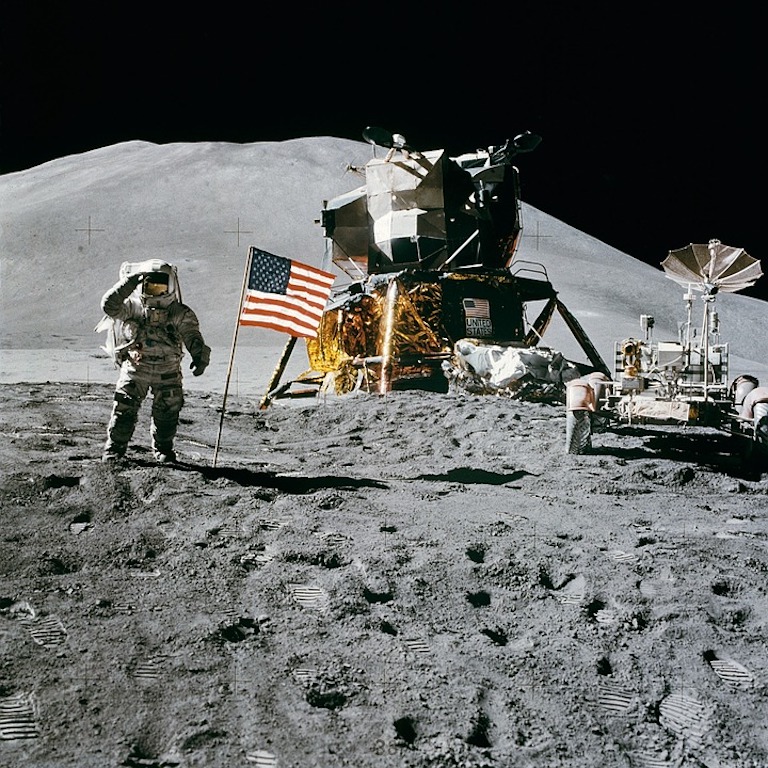Opinion: Moon mission

One small film, one great idea
September: the unofficial National Overreaction Month. In the first week alone, we witnessed Nike apparel set aflame, Serena Williams’ tempestuous courtside tantrum and, most recently, Americans criticizing a film that has not yet reached theaters.
Not long after Damien Chazelle’s Neil Armstrong biopic “First Man” premiered at the Venice Film Festival Aug. 29, news broke of the director’s decision to omit the American
flag-planting scene.
Prominent figures and officials like Sen. Marco Rubio, conservative analyst Ben Shapiro and President Donald Trump pronounced the film “anti-American” and a “pernicious falsification of history.”
Most notably, Buzz Aldrin, who flew in Apollo 11 with Armstrong and walked on the moon, responded by posting pictures of the flag planting with the caption
 “#proudtobeanAmerican.”
“#proudtobeanAmerican.”
A movie that depicts a solely American feat while removing the stars and stripes would raise justifiable concern.
But “First Man” is not that movie.
Vanity Fair’s correspondent did confirm that the flag-planting will not be shown on screen, but the American flag is still featured — “more in there than any movie you’ll see this year,” assured Tatiana Siegel of The Hollywood Reporter.
Chazelle released a statement clarifying his choice, emphasizing his desire to focus more on the obscure facets of Armstrong’s life and role in the mission. The move, he said, was not political.
But more importantly, he noted that the mission was ultimately a human achievement.
It’s an achievement manifested best, not by a flag, but by a footprint.
Armstrong’s first step was the epochal moment of the moon landing, forever changing how humans saw the curiosity that had pulled our ocean tides and colored our folklore for millennia.
In 1969, a great mystery had become tangible, and headlines around the world praised a miracle performed by the 400,000 people of NASA — a group comprised mostly of Americans.
Mostly.
This workforce also included Englishman Frances Thomas Bacon, whose fuel cell patents were the blueprints to a reliable energy source for Apollo 11.
The Telegraph reported that the dozens of British who played a hand in the moon landing included Lunar Landing Test Vehicle Program Manager Peter Armitage, Houston Mission Control Flight Director John Hodge, and Thomas Chambers, who aided in designing the Apollo guidance computer.
And let’s not forget, America’s rocket technology and space science program is the brainchild of Nazi-defector Wernher von Braun and his team of 1,600 Germans. Wernher was naturalized as an American citizen in 1955, more than a decade before man stepped
on the moon.
Almost 50 years ago, the world watched astronauts place six U.S. flags on the moon. According to NASA, those flags are now white. Half a century of harsh exposure to ultraviolet rays have bleached the flags colorless.
I find it fitting. It was imperative during the Cold War for America specifically to gain the upper hand in the space race against the USSR. But since then, the Soviet Union has vanished, similar to the color of our flags on the moon.
What remains as permanent as the human footprint in the Sea of Tranquility is the fact that mankind left a footprint there in the first place.
Our star-spangled banner is not gone entirely from the film or the moon. Viewers won’t leave the theater doubting which country spearheaded the initiative. But, waning ever so slightly into the background, the flag is a detail eclipsed by something even greater.
